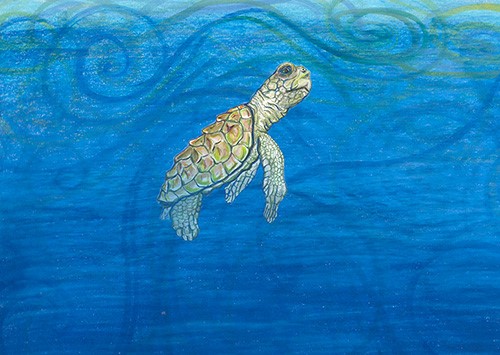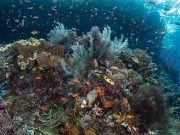What happens to baby turtles after they scramble off the sandy beaches where they are born and swim into the open ocean? Scientists now think they know.
A detailed global ocean model simulation by scientists at the National Center for Atmospheric Research and other institutions has given and insight into the baby turtle whereabouts. This could help inform more comprehensive conservation efforts that encompass regions of the open ocean where young turtles grow, not just their nesting beaches. It also pinpoints regions of the ocean that are important to better know how to protect turtles.

“To understand where sea turtle hatchlings are being swept when they enter the open ocean — and how favorable that habitat is to turtle survival — we need to simulate smaller scale ocean features, the jets and eddies that transport these younglings,” said Cheryl Harrison, a researcher at the University of Texas Rio Grande Valley who led the study. “The models typically used to simulate global ocean movement are too coarse for us to resolve these important features. The exciting thing about this study is that we were able to use a high-resolution, eddy-resolving model to track where the turtles are traveling.”
The U.S. National Science Foundation-funded ocean simulation, published in the Journal of the Royal Society Interface, was run using the National Center for Atmospheric Research-based Community Earth System Model at a resolution that’s an order of magnitude higher than standard global modelling runs. The model allows researchers to estimate food availability along the turtles’ path.
Loggerhead Turtles
Loggerhead sea turtles (Caretta caretta) nest globally on sandy beaches, with hatchlings dispersing into the open ocean. Where these juveniles go and what habitat they rely on remains a critical research question for informing conservation priorities. Bycatch is a serious problem for these turtles because they frequently come in contact with fisheries. Loggerheads nest sparsely throughout the Caribbean, on both sides of the Atlantic Ocean (Cape Verde Islands and Brazil), in the Mediterranean Sea from Turkey to Israel and Libya, throughout the Indian Ocean in small numbers, and in the North and South Pacific Ocean.
Hatchlings and juveniles spend the first 7 to 15 years of their lives in the open ocean. Then they migrate to nearshore coastal areas where they will forage and continue to grow for several more years. Adult loggerhead turtles migrate hundreds or thousands of kilometres from there to their nesting beaches.
















